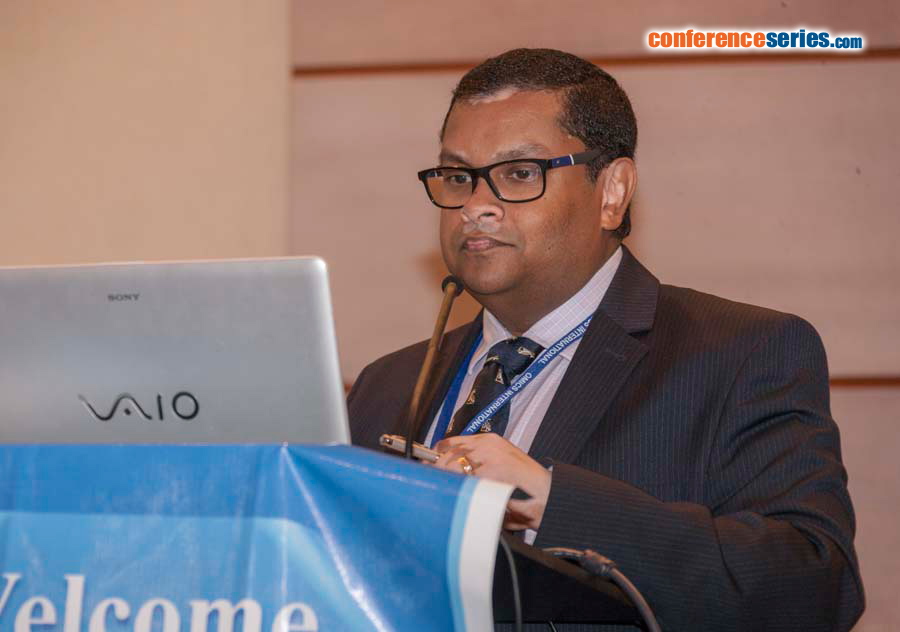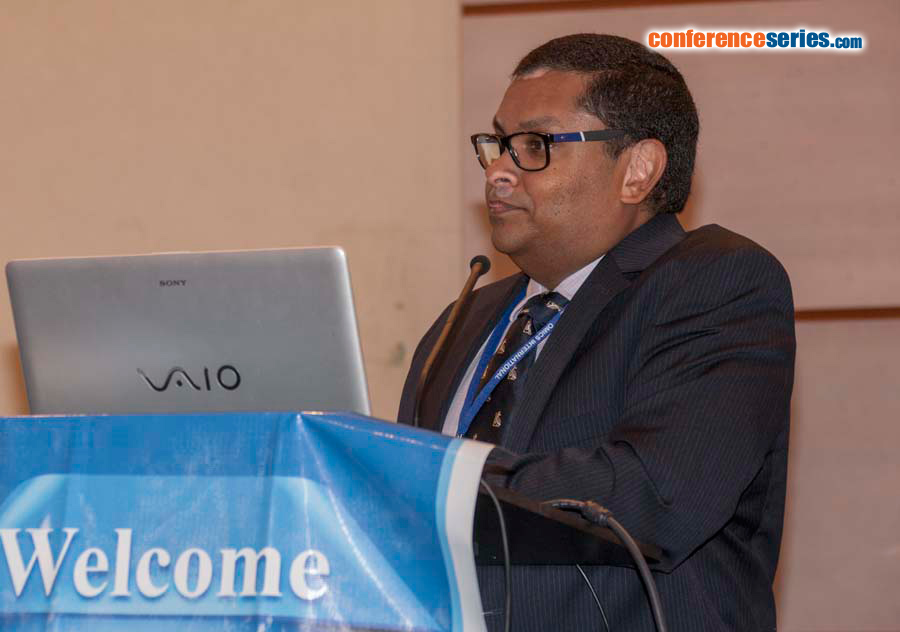
Thisara C Weerasuriya
Ayr University Hospital, UK
Title: All in one complications of a total hip replacement
Biography
Biography: Thisara C Weerasuriya
Abstract
A 65 year male with a high BMI, underwent an uncomplicated left total hip replacement. He insisted on going home on the 2nd post-operative day and dislocated his hip at home twice and the hip was reduced under anaesthesia twice. During mobilization he developed a pulmonary embolus necessitating thrombolytic therapy. Th is caused a haematoma which led to sciatic nerve palsy and his hip dislocated a third time. He had a posterior lip augmentation device fi tted and developed a likely wound infection subsequently. A 65 year old male with a BMI of 42 was admitted to the elective unit of the hospital for a routine total hip replacement using cement. He had osteoarthritis of his left hip which was disturbing him in his daily routine and was keeping him awake in the night. His walking distance was limited to 100 yards due to pain. He had to rely on a walking stick to help him mobilize this short distance. He was on a maximum dose of Co-Codamol and Diclofenac Sodium for pain relief, which according to him was of limited benefi t . He had to discontinue Tramadol due to constipation. Th e patient was also under treatment for type two diabetes and hypertension. He had surgery previously for retinal detachment and also has issues with sleep apnoea. Th e gentleman concerned walked with an antalgic gait. All hip movements were accompanied with an audible crepitus. The radiographs of the pelvis showed gross osteoarthritis of the left hip with narrowing of joint space, peri-articular sclerosis and osteophyte formation. Th e patient opted for a total hip replacement of the left hip has he felt that he had no other option. Following the relocation of the left hip the patient went home. He was not fi tted with an abduction brace due to anatomical constraints. Five days later he dislocated the hip once more. Two days post-reduction the patient developed sudden onset hypotension and hypoxia. A pulmonary embolus was considered and a CT pulmonary angiogram demonstrated a saddle thrombus of the pulmonary vasculature. Th rombolytic therapy led to the formation of a haematoma posteriorly at the left hip which caused pressure on the sciatic nerve causing a drop foot. He dislocated his left hip for the third time. A device was operatively fi tted on to the left hip. During surgery it was noted that his sciatic nerve was in continuity. Th e patient was re-admitted to hospital with a wound haematoma necessitating debridement and re-suture. He was treated with a course of antibiotics. However with recent research showing that obesity does not seriously alter the outcome following joint arthroplasty. More surgeons are off ering hip and knee arthroplasty to obese patients and patients may be less conscientious in making an eff ort to reduce weight. High BMI adds additional challenges to the operative procedure itself. In conclusion joint replacement should be off ered to patients with perhaps increased awareness of the full list of complications possible being clarifi ed at the very outset. Motivation to lose weight should be encouraged for the actual arthroplasty





